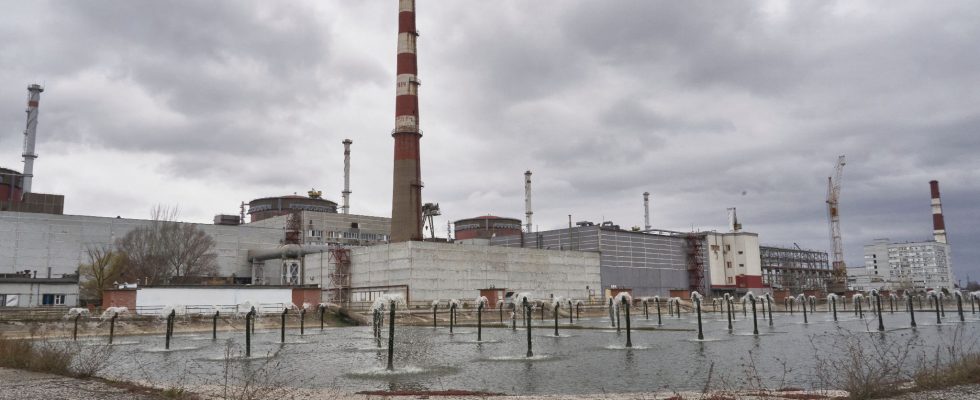Fallen into the hands of the Russian army on March 4, 2022, targeted by gunfire and disconnected from the electricity grid on several occasions, the Zaporijia nuclear power plant will not have ceased to give cold sweats.
Latest concern: the drop in the water level of the artificial lake which is used to cool the six reactors, following the destruction of the Kakhovka dam 150 kilometers downstream on the Dnieper River, on the night of June 5 to 6 . Large quantities of water escaped from the burst dam, flooding the surrounding villages and partially emptying the water reservoir which provides cooling.
The Director General of the International Atomic Energy Agency (IAEA), Rafael Grossi, was expected to inspect the plant on Tuesday, June 13.
Below the critical threshold of 12.7 meters
“On the way to Ukraine to meet President Zelensky and present an assistance program following the catastrophic flooding of the Kakhovka dam”, Rafael Grossi announced on Twitter. “I will assess the situation at the Zaporizhia nuclear power plant and rotate with a reinforced team.”
On site, the plant draws water from retention basins which are themselves fed by the Kakhovka reservoir. This must reach 12.7 meters deep to guarantee the operation of the cooling facilities, according to the IAEA. However, from 17 meters, the level would have fallen to 11.27 meters according to IAEA measurements in a communicated of June 11, below the critical threshold.
Relief basins
The plant can also rely on a large retention basin (the UHS, for Ultimate Heat Sink) and other basins, whose reserves are sufficient “for several months”, indicates the IAEA. However, the IRSN estimates that an excessive drop in the nearby lake could lead to the loss of the tightness of the ultimate water reserve due to the pressure exerted by the retained water, reports the Nuclear General Review.
In addition, the risk of incident remains high due to a lack of personnel, estimated in our pages Bruno Chareyron, of the Criirad. “Personnel, power supply and, now, water supply… All safety margins are decreasing,” he said in mid-April.
Even if the six reactors have been shut down for months, the IAEA recalls in its press release that it is not necessary to stop cooling the fuel in the unit cores or that placed in the storage pools “in order to avoid a potential meltdown accident and radioactive releases into the environment”.
